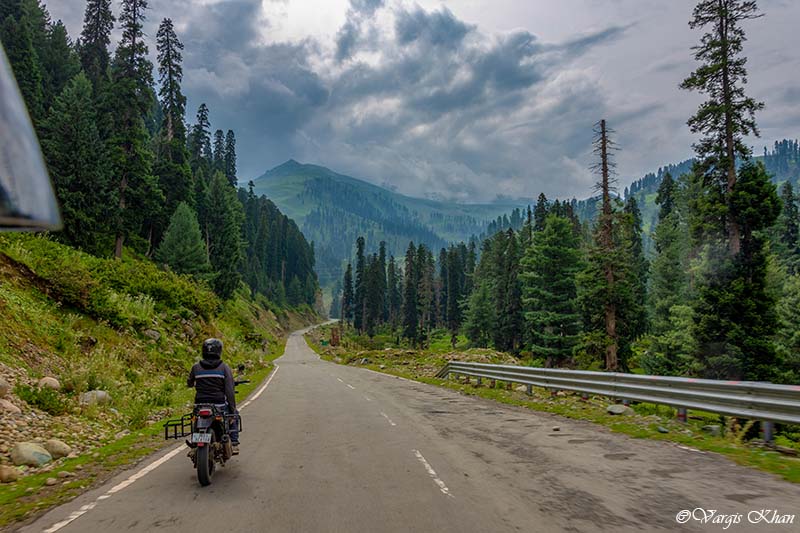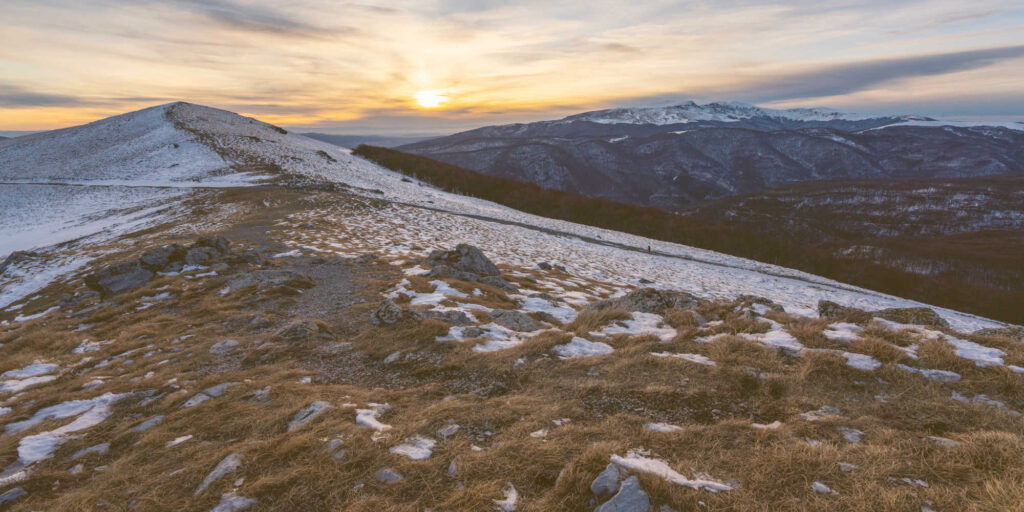The historical importance of Peer Ki Gali adds to its appeal.

Situated at an altitude of 11,500 feet, the Peer Ki Gali mountain pass, which traverses the mighty Peer Panjal range, offers a mesmerizing view.
About 90 kilometers south of Srinagar and just an hour’s drive from Shopian town, the mountain pass connects the Poonch and Rajouri districts in the Jammu division with Shopian in the Kashmir division.
As an intense heat wave hits Kashmir like other parts of the country, a major part of the mountain pass is covered in a thin layer of snow.
“This place is blessed with stunning natural beauty, captivating visitors with its majestic landscapes and pristine surroundings,” said Bilal Ahmad Bhat, a local resident.
A tourist from a remote station said that he considers this place as one of the best tourist destinations in Kashmir.
The entire stretch from Shopian to Peer Ki Gali offers a host of stunning sights along the way.
A wildlife sanctuary located at Heerpora, about a 25-minute drive from Shopian village, is home to Markhor, musk deer, Himalayan black bear, and other rare animals.
Spanning an extensive area of 341 km², the sanctuary is also home to rich flora such as Kail pines and wild roses.
A few kilometers from the sanctuary is the tourist destination Dobijan.
The area is known for its hot springs and people believe that its waters have healing powers.
“Since my childhood, I have seen people visiting this place and bathing in hot waters,” said Abdul Rashid, 70, of Shopian.
Although major tourist destinations in Kashmir did not witness snowfall in January, the mountain peaks dotted with towering pine trees remained covered in snow, providing visitors with a stunning winter landscape.
Local and foreign tourists visited the Mughal route to Dobijan to enjoy the snow.
Since the reopening of Mughal Road in April this year, tourists have visited the area to experience its beauty and charm.
Jahangir Ahmad, who runs a tea stall along the road, said the government should take a number of measures to develop the area and attract more tourists to the region.
“The highway is more than an alternative surface connection that connects two regions. Its panoramic views framed by snow-capped mountains and lush green meadows hold enormous tourism potential,” Ahmad said.
Many residents called on officials to prioritize road services along the route.
Peer Ki Gali Dobijan Development Authority CEO Ghalib Mohidin Shah said Greater Kashmir is creating the infrastructure to develop the region.
“We are also working on road development,” he said.
Shabir Ibn Yusuf adds to the report

As Peer Ki Gali continues to enchant visitors with its stunning natural beauty and historical charm, tourists and locals alike are voicing their opinions on this emerging tourist spot.
While tourists are captivated by the serene landscapes and opportunities for adventure, locals are advocating for improved infrastructure to support the growing flow of visitors.
The historical importance of Peer Ki Gali adds to its appeal.
The Mughal Highway, which connects Kashmir with the Poonch district, was once a vital trade route used by the Mughal emperors.
The highway’s rich history is reflected in the ancient architecture and remains of Mughal-era infrastructure that dot the landscape.
For history lovers, a visit to Pir Ki Gali offers a glimpse into J&K’s rich past and the legacy of the Mughal dynasty.
“Peer Ki Gali is a real gem,” said Ramesh Kumar, a tourist from Delhi. “The beauty of the landscapes here is unprecedented. It’s like entering a different world, away from the hustle and bustle of urban life. The hike was challenging but incredibly rewarding, with stunning views at every turn.
Preeti Roy from West Bengal said, “I have traveled to many places but Peer Ki Gali is truly special. The combination of history and natural beauty is captivating. It’s a great place to photograph nature and just relax. I’m already planning my next visit!
A trekker, Javid Ahmad Mir, said Peer Ki Gali has a lot to offer adventure enthusiasts like him.
“The trails are well maintained and the experience of camping under the stars in such a pristine environment is unforgettable. However, better facilities would improve the experience,” he said.
Locals, while appreciating the rise in tourism, are demanding better infrastructure to accommodate the growing number of visitors.
“Tourism has given us new opportunities, but we need more infrastructure to support it,” said Ghulam Rasool, a local vendor. “Better roads, guest houses, and proper sanitation are essential. This will not only help tourists but also improve our quality of life.
Another group of Peer Ki Gali vendors said the place has the potential to become a major tourist center.
They said they needed the government to invest more in the development of the region.
“Improved connectivity and services will attract more tourists and create more jobs for local people,” they said.
A group of tour guides said the natural beauty of Pir Ki Gali is its biggest asset, but it needs to be complemented by good infrastructure.
“Better safety measures, better health facilities, and environmentally friendly practices are essential to ensure the sustainable growth of tourism,” they said.
Officials in the tourism department of Jammu and Kashmir have recognized the need to develop infrastructure.
“We are aware of the growing popularity of Peer Ki Gali and the need to improve the facilities,” officials said. “Plans are underway to improve road connectivity, create more accommodation options, and ensure the area is equipped to welcome increasing numbers of tourists, whilst preserving its natural beauty. »
As Peer Ki Gali continues to grow as a tourism destination, collaboration between tourists, locals, and government will be key to unlocking its full potential, ensuring a harmonious balance between development and conservation.
About Peer Ki Gali
Pirr Panjal Pass, also called Peer Ki Gali (or Peer Gali), is a mountain pass and tourist destination, located in the Pir Panjal range of Jammu and Kashmir. It connects the Kashmir Valley with Rajouri and Poonch districts through the “Mughal Route”. It is the highest point on the Mughal route at 3,490 m (11,450 ft) and is located in the south-west of the Kashmir Valley.











